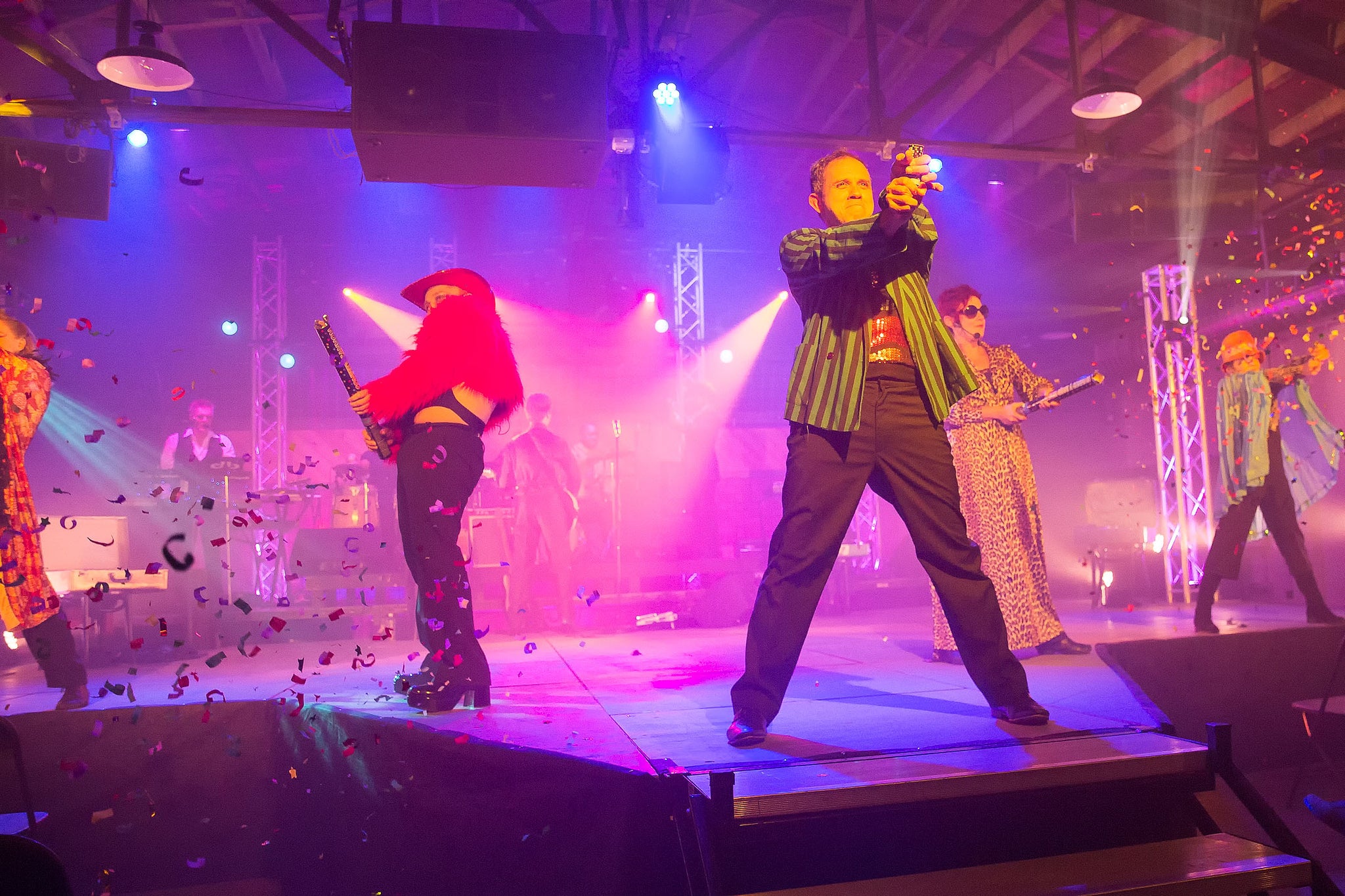Director's Cut
Yellow caution tape dangles from the doorway to the Jerome Robbins Theater and ropes off every row of seats.
Continue Reading
World-class review of ballet and dance.
“The Bowie Project,” the brainchild of Austin-based choreographer Andrea Ariel, whose other credits include the choreography for the film Waiting for Guffman and a three-part dance-theatre series on the floating garbage patch in the North Pacific Gyre, was an exercise in personae, layering, fragmenting, and improvisation. The performance, which incorporated three dancers, the David Bowie tribute band Super Creeps, and three members of New York’s Strike Anywhere Performance Ensemble, utilized Soundpainting, a “composing sign language” invented by musician Walter Thompson. Working with Thompson, Ariel adapted and expanded the vocabulary of music-focused conducting gestures—they look a bit like the gestures one makes during a game of charades—for dance and performance. Through Soundpainting with a bank of Bowie songs, text from his interviews, and movement sequences within a predetermined arc, the show facilitated an engagingly disorienting dive into the most outwardly colorful period of Bowie’s life and work: the 1970s.
Performance
Place
Words



“Uncommonly intelligent, substantial coverage.”
Your weekly source for world-class dance reviews, interviews, articles, and more.
Already a paid subscriber? Login
Yellow caution tape dangles from the doorway to the Jerome Robbins Theater and ropes off every row of seats.
Continue ReadingThe Trisha Brown Dance Company embarks on a national tour this June celebrating the centennial of avant-garde American visual artist Robert Rauschenberg.
Continue ReadingFor Ballet Hispánico’s upcoming season at New York City Center from May 29-June 1, the company will present Gustavo Ramírez Sansano's “Carmen.maquia,” a contemporary take on the timeless story at the heart of George Bizet’s unforgettable opera “Carmen.”
Continue ReadingAngelina Laguna kneels on the sidewalk and places her body perpendicular to the flow of the First Avenue foot traffic.
Continue Reading
comments